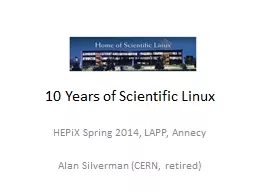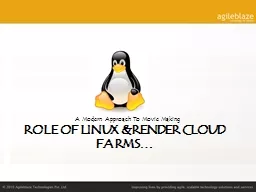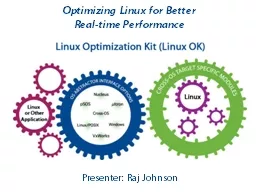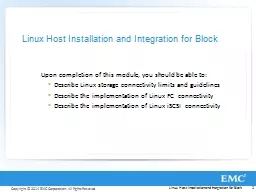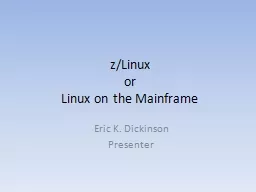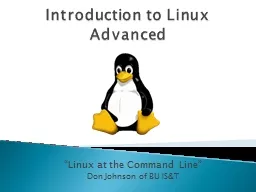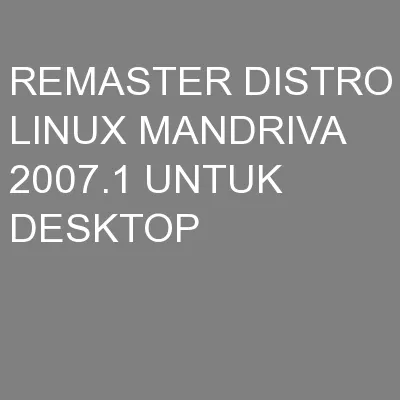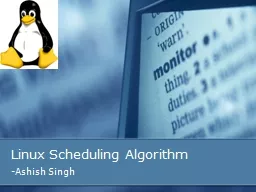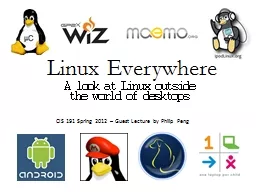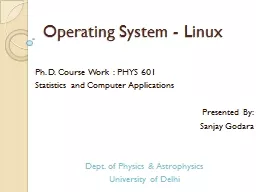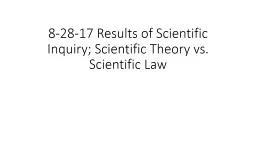PPT-10 Years of Scientific Linux
Author : kittie-lecroy | Published Date : 2016-04-22
HEPiX Spring 2014 LAPP Annecy Alan Silverman CERN retired The Initial Problem 1 Once upon a time there was UNIX or rather there were UNIXes many of them SunOS
Presentation Embed Code
Download Presentation
Download Presentation The PPT/PDF document "10 Years of Scientific Linux" is the property of its rightful owner. Permission is granted to download and print the materials on this website for personal, non-commercial use only, and to display it on your personal computer provided you do not modify the materials and that you retain all copyright notices contained in the materials. By downloading content from our website, you accept the terms of this agreement.
10 Years of Scientific Linux: Transcript
Download Rules Of Document
"10 Years of Scientific Linux"The content belongs to its owner. You may download and print it for personal use, without modification, and keep all copyright notices. By downloading, you agree to these terms.
Related Documents

